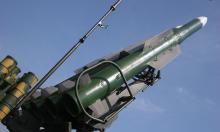The gunman at Virginia Tech was a stident

The gunman guilty of killing 33 people was a student of the university, Virginia Tech's president said Tuesday. That is the reason of the school delay in warning students about what became the deadliest shooting rampage in U.S. history.
Though university president Charles Steger did not explicitly say the student, who he identified as an Asian male, was also the gunman in the first shooting, he said he did not believe there was another shooter. The gunman struck down two people at a dormitory Monday before killing 30 more people at a campus building and finally killing himself with a shot to his head.
"We do know that he was an Asian male - this is the second incident - an Asian man who was a resident in one of our dormitories," said Steger in an interview with CNN, confirming for the first time that the killer was a student.
Some students said their first warning came more than two hours after the first shooting, in an e-mail at 9:26 a.m. By then the second shooting had begun.
"I think the university has blood on their hands because of their lack of action after the first incident," said Billy Bason, 18, who lives on the seventh floor of West Ambler Johnston, a high-rise coed dormitory where the shooting began and two people died.
Steger said the university was trying to notify students who were already on-campus, not those who were commuting in.
"We warned the students that we thought were immediately impacted," he told CNN. "We felt that confining them to the classroom was how to keep them safest."
He said investigators did not know there was a shooter loose on campus in the interval between the two shootings because the first could have been a murder-suicide.
Two students told NBC television's "Today" show they were unaware of the dorm shooting when they reported to a German class where the gunman later opened fire.
Derek O'Dell, his arm in a cast after being shot, described a shooter who fired away in "eerily silence" with "no specific target - just taking out anybody he could."
After the gunman left the room, students could hear him shooting other people down the hall. O'Dell said he and other students barricaded the door so the shooter couldn't get back in - though he later tried.
"After he couldn't get the door open he tried shooting it open... but the gunshots were blunted by the door," O'Dell said.
The slayings left people of this once-peaceful mountain town and the university at its heart praying for the victims, struggling to find order in a tragedy of such unspeakable horror it defies reason.
"For Ryan and Emily and for those whose names we do not know," one woman pleaded in a church service Monday night.
Another mourner added: "For parents near and far who wonder at a time like this, 'Is my child safe?"'
That question promises to haunt Blacksburg long after Monday's attacks. Investigators offered no motive, and the gunman's name was not immediately released.
The shooting began about 7:15 a.m. on the fourth floor of the dorm.
Police were still investigating around 9:15 a.m., when a gunman wielding two handguns and carrying multiple clips of ammunition stormed Norris Hall, a classroom building a half-mile away on the other side of the 2,600-acre (1052-hectare) campus.
At least 15 people were hurt in the second attack, some seriously. Many found themselves trapped after someone, apparently the shooter, chained and locked Norris Hall doors from the inside.
Students jumped from windows, and students and faculty carried away some of the wounded without waiting for ambulances to arrive.
Police commandos with helmets, flak jackets and assault rifles swarmed over the campus. A student used his cell-phone camera to record the sound of bullets echoing through a stone building.
Inside Norris, the attack began with a thunderous sound from Room 206 - "what sounded like an enormous hammer," said Alec Calhoun, a 20-year-old junior who was in a solid mechanics lecture in a classroom next door.
Screams followed an instant later, and the banging continued. When students realized the sounds were gunshots, Calhoun said, he started flipping over desks to make hiding places. Others dashed to the windows of the second-floor classroom, kicking out the screens and jumping from the ledge of Room 204, he said.
"I must've been the eighth or ninth person who jumped, and I think I was the last," said Calhoun. He landed in a bush and ran.
Calhoun said that the two students behind him were shot, but that he believed they survived. Just before he climbed out the window, Calhoun said, he turned to look at his professor, who hadstayed behind, apparently to prevent the gunman from opening the door.
The instructor was killed, Calhoun said.
Erin Sheehan, who was in the German class next door to Calhoun's class, told the student newspaper, the Collegiate Times, that she was one of only four of about two dozen people in the class to walk out of the room. The rest were dead or wounded, she said.
She said the gunman "was just a normal-looking kid, Asian, but he had on a Boy Scout-type outfit. He wore a tan button-up vest, and this black vest, maybe it was for ammo or something."
The gunman first shot the professor in the head and then fired on the class, another student, Trey Perkins, told The Washington Post. The gunman was about 19 years old and had a "very serious but very calm look on his face," he said.
"Everyone hit the floor at that moment," said Perkins, a second year student studying mechanical engineering. "And the shots seemed like it lasted forever."
At an evening news conference, Police Chief Wendell Flinchum refused to dismiss the possibility that a co-conspirator or second shooter was involved. He said police had interviewed a male who was a "person of interest" in the dorm shooting and who knew one of the victims, but he declined to give details.
"I'm not saying there's a gunman on the loose," Flinchum said. Ballistics tests will help explain what happened, he said.
Steger said authorities believed the shooting at the dorm was a domestic dispute and mistakenly thought the gunman had fled the campus.
"We had no reason to suspect any other incident was going to occur," he said.
Steger emphasized that the university closed off the dorm after the first attack and decided to rely on e-mail and other electronic means to spread the word, but said that with 11,000 people driving onto campus first thing in the morning, it was difficult to get the word out.
He said that before the e-mail was sent, the university began telephoning resident advisers in the dorms and sent people to knock on doors. Students were warned to stay inside and away from the windows.
"We can only make decisions based on the information you had at the time. You don't have hours to reflect on it," Steger said.
The 9:26 e-mail had few details:
"A shooting incident occurred at West Amber Johnston earlier this morning. Police are on the scene and are investigating." The message warned students to be cautious and contact police about anything suspicious.
Until Monday, the deadliest shooting in modern U.S. history was in Killeen, Texas, in 1991, when George Hennard plowed his pickup truck into a Luby's Cafeteria and shot 23 people to death, then himself.
The massacre Monday took place almost eight years to the day after the Columbine High bloodbath near Littleton, Colorado. On April 20, 1999, two teenagers killed 12 fellow students and a teacher before taking their own lives.
Previously, the deadliest campus shooting in U.S. history was a rampage that took place in 1966 at the University of Texas at Austin, where Charles Whitman climbed the clock tower and opened fire with a rifle from the 28th-floor observation deck. He killed 16 people before he was shot to death by police.
Founded in 1872, Virginia Tech is nestled in southwestern Virginia, about 160 miles (257 kilometers) west of Richmond. With more than 25,000 full-time students, it has the state's largest full-time student population. The school is best known for its engineering school and its powerhouse Hokies football team.
Police said there had been bomb threats on campus over the past two weeks but that they had not determined whether they were linked to the shootings.
It was second time in less than a year that the campus was closed because of gunfire.
Last August, the opening day of classes was canceled when an escaped jail inmate allegedly killed a hospital guard off campus and fled to the Tech area. A sheriff's deputy was killed just off campus. The accused gunman, William Morva, faces capital murder charges.
Among the dead were professors Liviu Librescu and Kevin Granata, said Ishwar K. Puri, the head of the engineering science and mechanics department.
Librescu, an Israeli, was born in Romania and was known internationally for his research in aeronautical engineering, Puri wrote in an e-mail to The Associated Press.
Granata and his students researched muscle and reflex response and robotics. Puri called him one of the top five biomechanics researchers in the country working on movement dynamics in cerebral palsy.
Subscribe to Pravda.Ru Telegram channel, Facebook, RSS!




